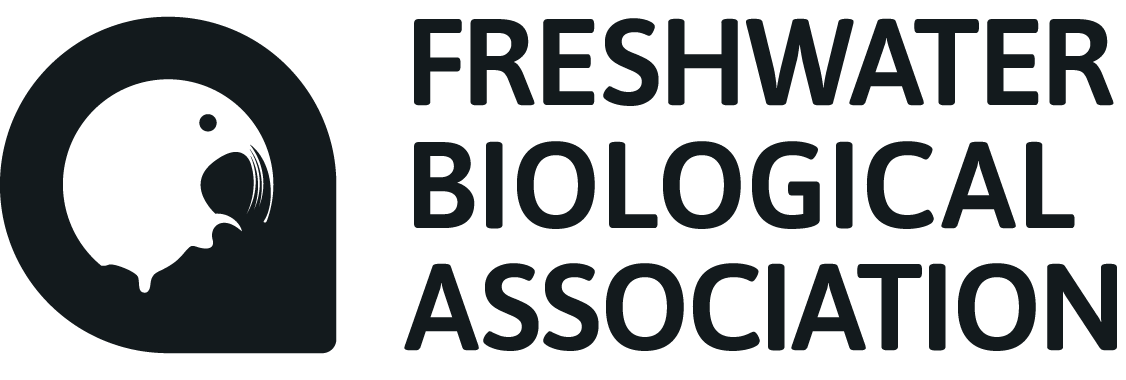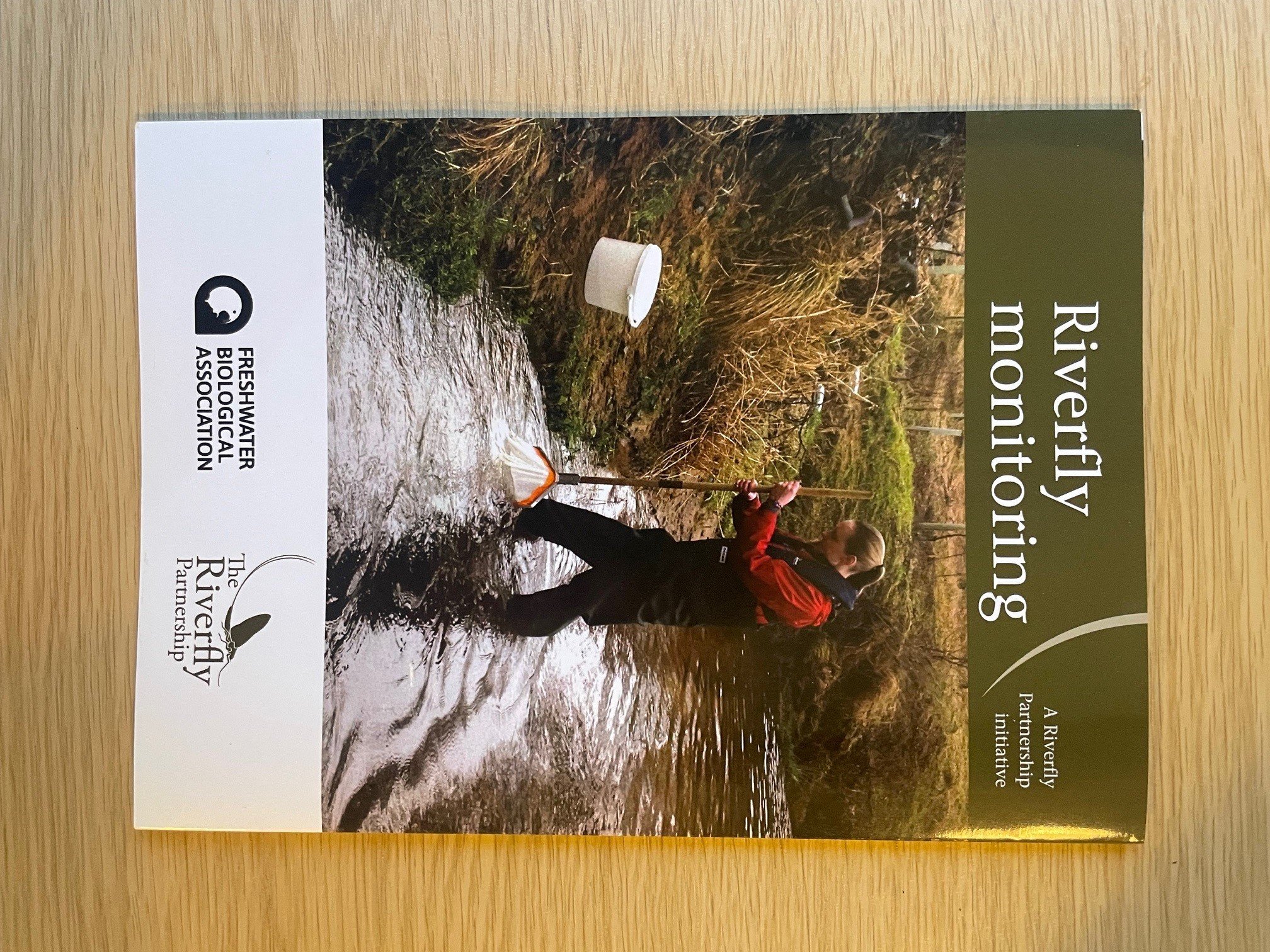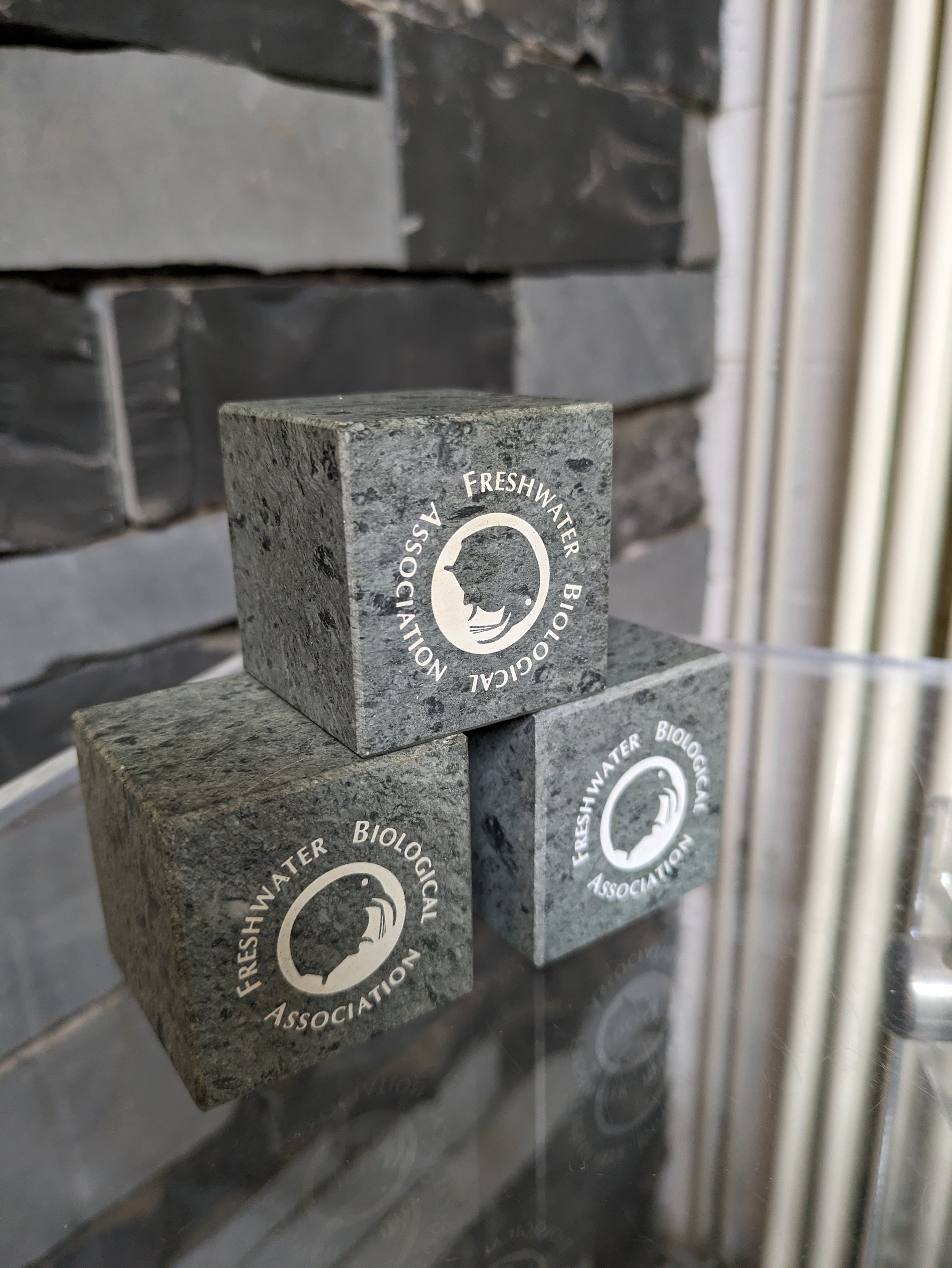Feeling our way towards macroalgal assessment for citizen scientists
14 June, 2023
By Katrina Woodfield (1), Martyn Kelly (2), Bill Brierley (3) & Bernadette White (4)
(1) Lancaster University; (2) Bowburn Consultancy / University of Nottingham; (3) Freshwater Biological Association; (4) Local Authorities Water Programme, Galway
Lancaster University undergraduate Katrina Woodfield spent the long hot summer of 2022 working with catchment scientists in Ireland, Ribble Rivers Trust and FBA Fellows to develop a new macroalgae-based tool that citizen scientists can use to assess stream condition.
Edited by Rachel Stubbington, Nottingham Trent University
Rachel is both a Fellow of the Freshwater Biological Association and long-standing Editor of FBA Articles. If you would like to submit an article for consideration for publication, please contact Rachel at: rachel.stubbington@ntu.ac.uk
Introduction
Unsightly growths of filamentous algae are among the most conspicuous indicators of poor water quality and, as such, are obvious candidates for citizen scientists to use for assessing the condition of their local rivers and streams. Several aspects of stream condition are already the focus of UK citizen science initiatives (Anglers’ Riverfly Monitoring Initiative [ARMI] – Brooks et al. 2019; Modular River Physical [MoRPh] survey – Shuker et al. 2023), and a method for filamentous algae could be the next step. Parallel work in Ireland has seen the development of a macroinvertebrate-based Citizen Science Stream Index (CSSI) along with a more advanced index, the Small Stream Impact Score (SSIS, and attention is now turning to other citizen science schemes that enable communities to record conditions in their local waterbodies (Kelly-Quinn et al. 2022).
A starting point for an algae-based citizen science scheme already exists in RAPPER (Rapid Assessment of Periphyton Ecology in Rivers: Kelly et al. 2016). This was developed with funding from SEPA to enable their ecologists to gather information from more sites than is possible with conventional tools. The waterbody-scale evaluations of ecological status that these tools provide often raise questions about local pressures that cannot be addressed without a closer look at the catchment. RAPPER was developed for this purpose, with the assumption that users would have some training in algal identification and access to microscopes. When we approached River Trusts to see if RAPPER had any potential outside the statutory organisations, they always asked “can our volunteers can use it without recourse to a microscope?” We also wondered how results of RAPPER surveys (or a simplified variant) might be used alongside ARMI to give a more holistic overview of stream condition than obtained using either in isolation (recognising that invertebrates and algae are most sensitive to different stressors).
Identifying filamentous algae
“Macroalgae” describes algae that can be recognised and at least partially identified with the naked eye. In some cases (Hildenbrandia, Hydrodictyon), a genus or species can be identified in the field; in a few cases, a family or order can be recognised; whilst for others, no reliable guess at identity can be made without a microscope. This latter group included several common genera of green algae (Chlorophyta and Charophyta) found throughout the nutrient enrichment gradient, and an inability to differentiate them would dull RAPPER’s sensitivity.
Two properties useful for identifying filamentous algae can be ascertained in the field: the presence of branching filaments can often be detected using a hand lens, whilst rubbing a small portion between fingers indicates whether the alga has a slimy texture. Many genera that live in low-nutrient conditions produce mucilage which acts as an external “microbiome” that helps an organism acquire nutrients. The slime also discourages epiphytes, which can otherwise rob algae of the sunlight they need to photosynthesise. Nutrient-tolerant algae such as Cladophora, by contrast, have a distinct coarse feel.
But would these simple distinctions enable citizen scientists to reliably assess stream condition? Workshops for Local Authority Waters Programme (LAWPRO)’s catchment teams in Galway in May 2022 explored the practical need for a non-microscope approach to enable incorporation of macroalgae into the assessment techniques used to tell a catchment’s story. Adding a more formalised approach for macroalgae meant that the information collated would be consistent across Ireland, allowing for both spatial and temporal comparisons. In summer 2023, with financial support from the British Phycological Society, and practical support from the FBA and Ribble Rivers Trust, we tested a simplified (non-microscope) version of RAPPER against the original at 19 sites across two sub-catchments of the River Ribble.
The RAPPER method involves zigzagging along a 10-metre section of the channel (Fig. 1), looking for visible growths of macroalgae before estimating the cover of each taxon. For the simplified method, all identification was done in the field, whereas samples of each genus were identified under the microscope in the laboratory for the original method. Using the presence of nutrient-sensitive taxa and total cover of nutrient-tolerant taxa, sites were classified as “not at risk”, “maybe at risk” or “at risk” of eutrophication. Downstream from each survey reach, invertebrates were sampled using the standard ARMI method, which involves estimating the abundance of eight easily identifiable specific macroinvertebrate taxa (all indicators of good water quality) from a three-minute kick sample.
Figure 1: How to survey algae in a stream: the yellow line indicates the 10-m survey stretch; blue lines indicate the zig-zag route followed by the surveyor, starting at the downstream end.
Observations
In total, 22 macroalgal genera were observed, with the most commonly recorded genera being Oedogonium (84% of sites), Cladophora (78%) and Spirogyra (68%). The diatom Melosira varians was also widespread, and generally abundant, providing valuable additional information where citizen scientists use RAPPER independently of the diatom-based assessments done by regulatory agencies.
The comparison of the original and simplified RAPPER showed promising results: at 95% of sites, the two versions gave the same result (Table 1). Importantly, “not at risk” and “at risk” sites were distinguished consistently. At the one site mistakenly classified as “at risk” by the simplified method, the presence of a nutrient-sensitive taxon was concealed by thick growths of M. varians. Although a macroalgal growth may look homogenous, several taxa are often present and, without a microscope, this diversity may be overlooked. Despite this limitation, initial concerns that, due to the limited number of macroalgae included in the simplified RAPPER method, volunteers might be unable to identify any taxa at a site proved unfounded: during the field trials, sufficient identifiable growths were present to assess the status of all sites.
Table 1: A comparison of the simplified and original RAPPER method outcomes across the 19 sites in the Ribble catchment.
ARMI (Anglers’ Riverfly Monitoring Initiative) scores for sites
The accuracy of field identification was also high. For 91% of observations, the RAPPER category (e.g. “nutrient-tolerant”) assigned in the field remained the same after lab identification. The most misidentified genus was Cladophora, which was confused with Vaucheria, Oedogonium and Aegagropila. While these mistakes had limited effect on the overall eutrophication risk, they highlight the limitations of identification without a microscope.
We expected that sites classified as “not at risk” and “at risk” of eutrophication using RAPPER would have the highest and lowest ARMI scores, respectively, but no such relationship was observed (Fig. 2). This may be partly explained by longitudinal changes in river productivity. Some “not at risk” upland sites, for example, also had notably low ARMI scores compared to “at risk” lowland rivers. ARMI scores were also more variable at “at risk” compared to “not at risk” sites, indicating that “at risk” sites were affected by more factors than just longitudinal changes in productivity. For example, some “at risk” sites with very low ARMI scores may have been impacted by other agricultural pollutants which hadn’t altered the macroalgal community. The extended AMRI method may better complement RAPPER as it relies less on macroinvertebrate abundance, includes negative indicators of water quality, and provides an additional silt and flow score, conditions that can also affect macroalgal growth.
Figure 2: ARMI (Anglers’ Riverfly Monitoring Initiative) scores for sites classified as not at risk, maybe at risk and at risk of eutrophication using the original RAPPER method.
There were discrepancies between RAPPER results and the most recent (2019) Water Framework Directive (WFD) ecological status classifications. For example, one stream with ‘good’ macrophyte-based status had 80% coverage of Cladophora during our survey, indicating that condition may have recently declined – a conclusion which Ribble Rivers Trust also reached independently. The exceptionally hot and dry weather during summer 2022 may also have contributed to a short-term increase in macroalgae cover.
Interpretation of RAPPER data evolved around the assumption that nutrient enrichment is the major driver of filamentous algal growth in rivers – but such growths can reflect other pressures too. For example, extensive growths of Hydrodictyon reticulatum can occur during extended periods of warm weather and low flows (Fig. 3), and this species is expected to become more common due to global warming (John et al. 2011). Extensive algal growth can also reflect the loss of top-down control. For example, metal-enriched streams draining mine adits often have extensive algal cover due to an absence of grazing invertebrates (Armitage 1980).
Figure 3: The River Ribble above Clitheroe in August 2022. Warm, dry weather earlier in the summer may partly explain the prolific growths of Hydrodictyon reticulatum visible in the foreground.
Final thoughts
Against this background of increasing pressures, RAPPER provides an objective means of recording symptoms rather than as a diagnostic tool. It can enable ecological “triage”, identifying sites where more detailed investigation is required or (in the case of citizen scientists) where a problem needs to be reported. The “maybe at risk” category recognises the inherent variability in communities of short-lived organisms exposed to rapidly fluctuating environments. There will inevitably be situations where more information – whether from further RAPPER surveys, ARMI surveys at the same location, or explorations of adjacent stretches to trace possible sources – is needed.
We hope using RAPPER can also educate people in the fascinating biology of macroalgae. Often denigrated as “problem” organisms, applying the simple rules developed for RAPPER should highlight filamentous algae as natural, if typically ephemeral, components of streams, and to see extensive, persistent growths as symptoms of poor ecosystem health, rather than as problems in themselves.
References
Armitage, P.D. 1980. The effects of mine drainage and organic enrichment on benthos in the River Nent system, Northern Pennines. Hydrobiologia 74: 119–128. https://doi.org/10.1007/BF00014563
Brooks, S.J. et al. 2019. Anglers’ Riverfly Monitoring Initiative (ARMI): A UK-wide citizen science project for water quality assessment. Freshwater Science 38: 270–280. https://doi.org/10.1086/703397
John, D.M., Whitton, B.A. and Brook, A.J. 2011. The Freshwater Algal Flora of the British Isles. Cambridge University Press, Cambridge.
Kelly, M.G., Krokowski, J. and Harding, J.P.C. 2016. RAPPER: A new method for rapid assessment of macroalgae as a complement to diatom-based assessments of ecological status. Science of the Total Environment 568: 536-545. https://doi.org/10.1016/j.scitotenv.2015.12.068
Kelly-Quinn, M., Biggs, J. N., Brooks, S., Fortuño, P., Hegarty, S., Jones, J. I., & Regan, F. 2022. Opportunities, approaches and challenges to the engagement of citizens in filling small water body data gaps. Hydrobiologia, 1-21. https://doi.org/10.1007/s10750-022-04973-y
Shuker, L. et al. 2023. The Modular River Survey and its application in ecological studies. FBA News: The Freshwater Biological Association Newsletter 86: 4–8.
Further reading
The Freshwater Biological Association publishes a wide range of books and offers a number of courses throughout the year. Check out our shop here.
Get involved
Our scientific research builds a community of action, bringing people and organisations together to deliver the urgent action needed to protect freshwaters. Join us in protecting freshwater environments now and for the future.













